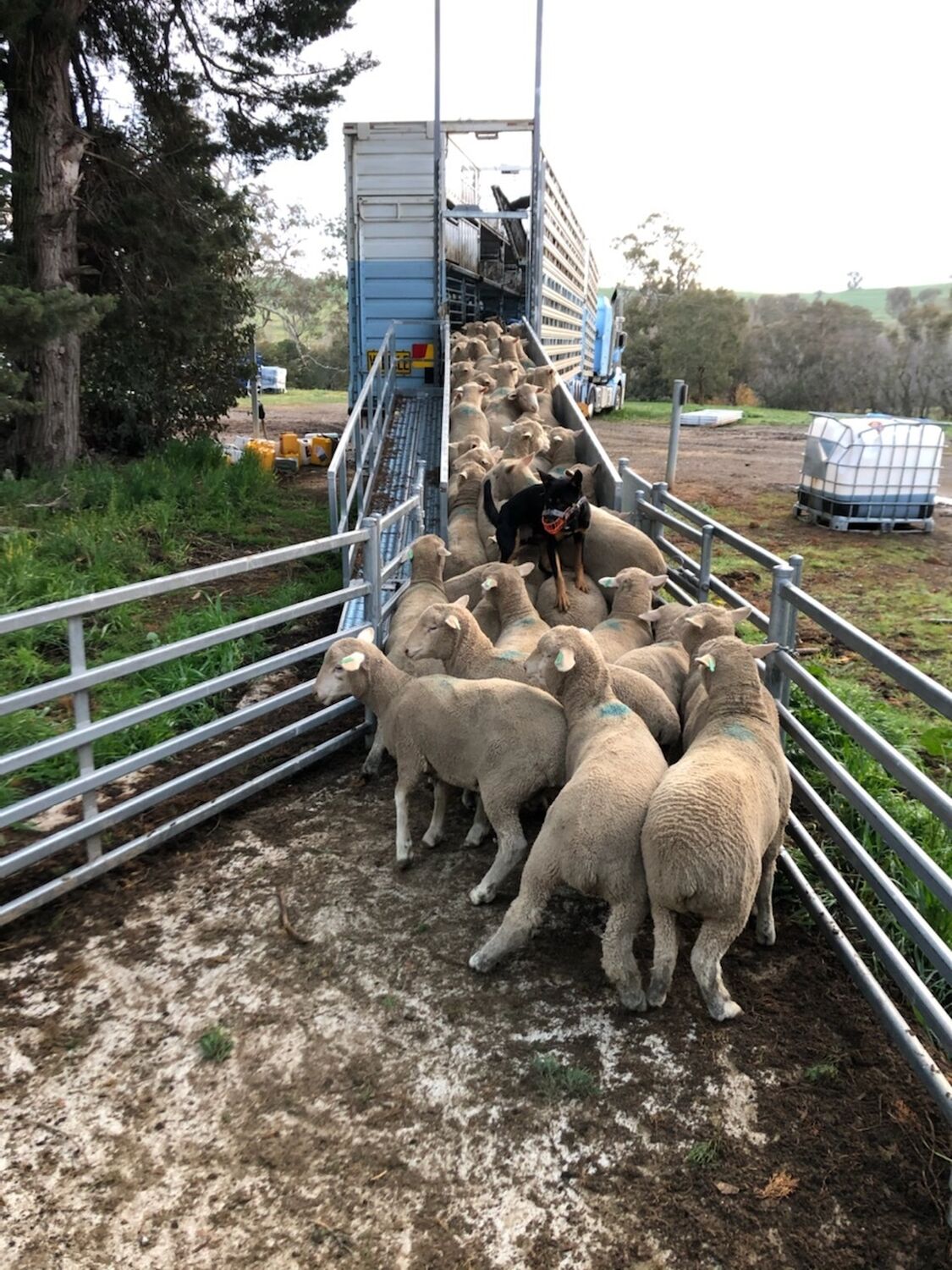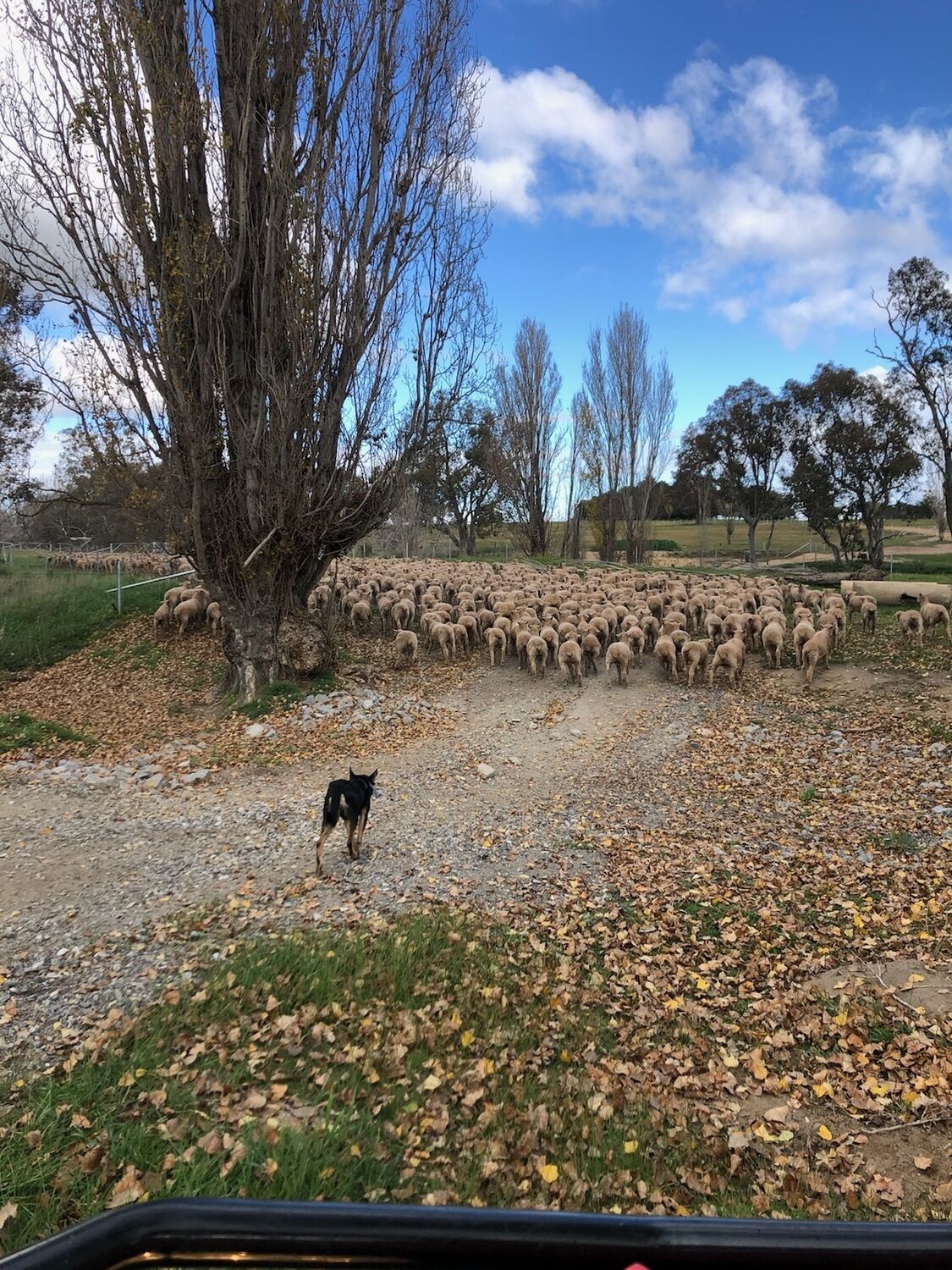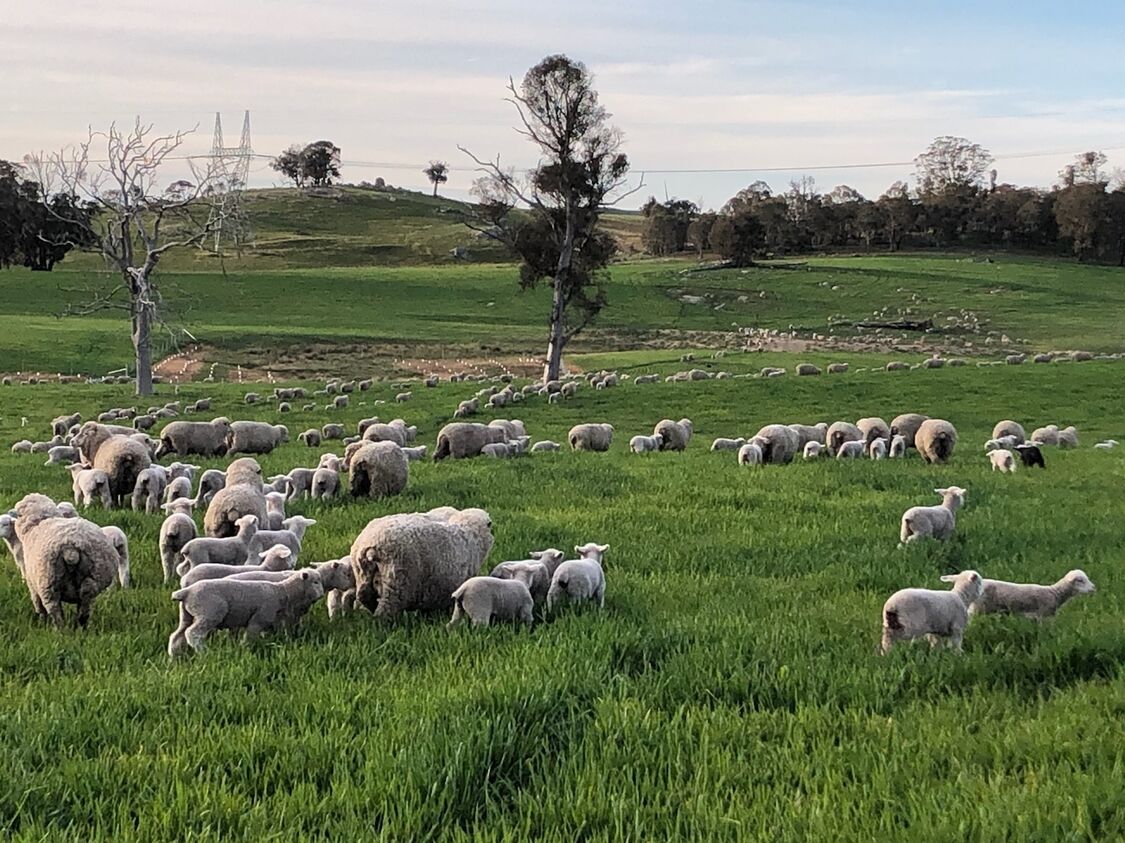
Lambing down 8500 Merino ewes is no mean feat, but it is made easier by being confident in the outcome. How? By joining them to Poll Dorsets.
Mal Hungerford manages Merrill, a sheep operation in a locality of the same name between Gunning and Crookwell in NSW, which is one element of a five-property family farming business. Primarily in the Merino game, the operation breeds ewes on its other properties, and when they hit five year of age, they are sent to Merrill.
Those ewes are all joined to Poll Dorset sires, with a majority of the lambs turned off direct to a lamb finisher before ending up at Coles for processing. Mr Hungerford has been running the operation since 2015, and says a focus on the right rams has been pivotal to success.
“Our aim is to keep 2000 lambs to finish when the season permits, with the remainder sold as stores at 30-35kg. The operation was looking for a way to value add older Merino ewes - instead of buying in lambs all the time - and it seems to work well,” Mr Hungerford said.
“We had to buy some ewes in this year because we were understocked - we have bought young ewes - some from Western Australia and South Australia - wherever we can get them that wool matches with those we breed, being 16 to 18 micron. We joined about 2000/2500 on 1st January, and the remainder on 1st April for a spring lamb - that’s only to spread it out a bit, and we grow 200-300ha of oats a year so it takes advantage of that as well.”
All ewes at Merrill are scanned for multiples, with empty ewes joined again, creating a third lambing period each year. “The target for the ewes is to get them to 3-score condition, and rams in as good as nick as you can get them - they have lucerne for a month before going out to work, and then lucerne/barley ad-lib when they come out, as some go back in again. We are joining at 1.2 per cent this year, but we usually aim for 1.5 per cent. And usually only scan about 5 per cent drys overall so that is working well,” Mr Hungerford said.
Mr Hungerford said when he started at the operation, there were a range of rams being used, many unsuitable for the frame size of their Merino flock. He turned the buying focus to Poll Dorset rams with low birth weight and high post-weaning weight Australian Sheep Breeding Figures, and has since sourced rams from Rowallan, Bendick Murrell and Kentish Downs, Little Billabong.
“When you are lambing 6500 ewes at once you can’t be everywhere, and the low birthweight lambs are going well, they take off at marking age and get a good start,” Mr Hungerford said. “The early lambs in a good year get to 30kg plus at weaning at three months of age, and if the timing doesn’t work out for sending them direct to the finisher, we put them on AuctionsPlus and have no trouble selling them - they have such a good name, that as soon as you offer them up they sell. Once you do it a few times you end up with repeat customers and that is a big thing - they know what they are getting.”
Ewes are running on predominantly improved pasture - a phalaris, cocksfoot and clover mix, and pastures are being renovated each year, with oats planted for the winter and brassica for the summer. “We put early (lambing) ewes onto oats after marking until weaning, and then brassica is planted in August so when we wean the first week of December they go onto Brassica if they don’t get trucked straight out,” Mr Hungerford said.
There are very few 2020 drop lambs left at Merrill, thanks to a bumper season and an abundance of feed. “We sold some four weeks ago, they all weighed at 34kg and made $174, which is pretty good money for a store lamb without shearing costs, etc,” Mr Hungerford said.
“The last couple of years we’ve bought ewes already in lamb to non-Dorset rams and our main buyer won’t take them as they then won’t take them at Coles. Poll Dorsets are easy to sell - everything will sell when there aren’t many about, but when everyones got lambs you want to be selling the best lambs.”

